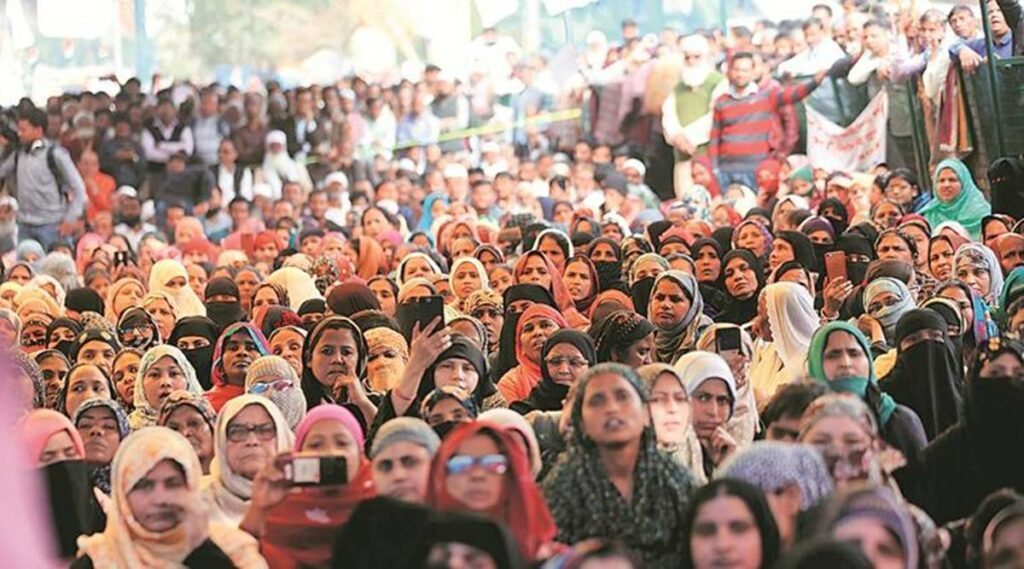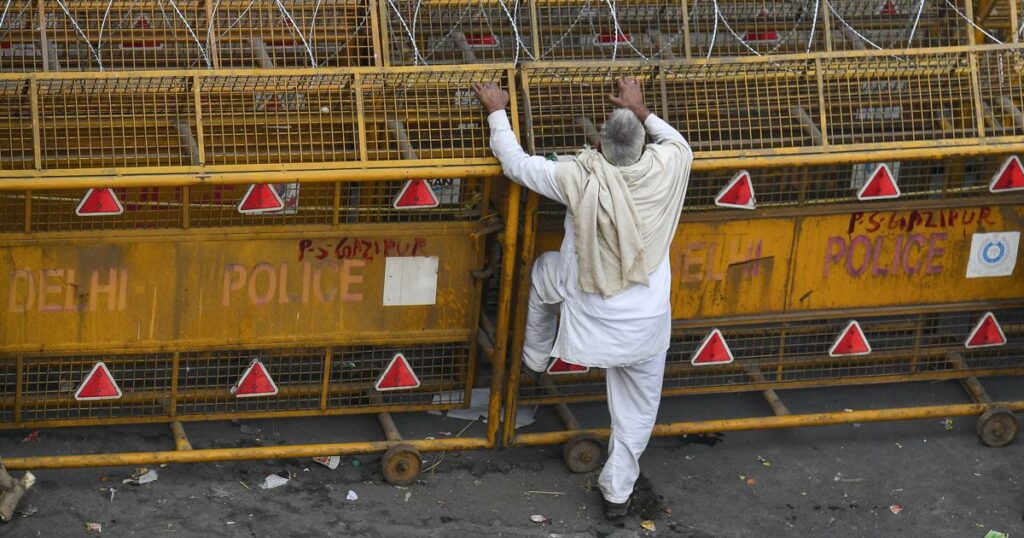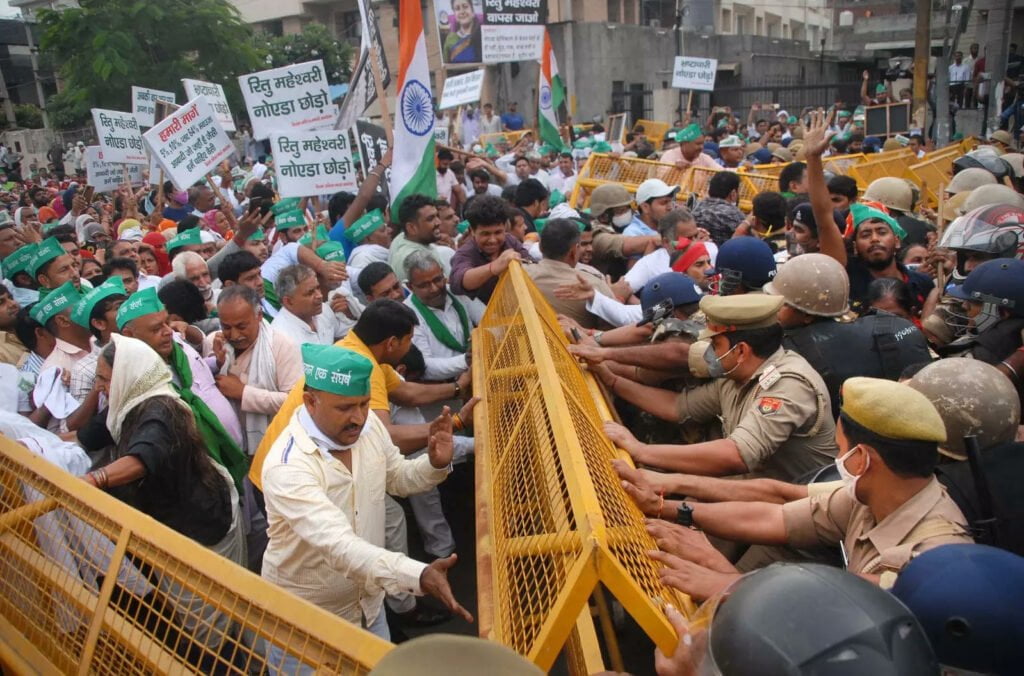In the ethereal realm of literature, where words dance and ideas intertwine, resides Brahma Prakash’s masterpiece, ‘Body on the Barricades: Life, Art And Resistance In Contemporary India‘. It presents a profound analysis of the cultural, political, and religious aspects that have contributed to the rise of curtailment in Indian society. Contrary to popular belief the emergence of darkness, and the erosion of democratic ties, are not sudden ruptures, but a culmination of disguised injustices ingrained in the foundations of the Indian state, a condition whose influence cannot be underestimated. It has long been embedded in the fabric of Hindu society, gradually infiltrating the nation’s politics from the temples to the parliamentary system.
It is a grave mistake to think that the rise of curtailment is sudden. That it came with the rise of right-wing politics. The project of curtailment was already built into the fabric of Hindu society. With the nation, from the temple, the brahminical body politic entered the parliament. It was moving slowly inwards into the heart of the nation’s politics. The rise of lynching mobs and the near death of democracy were not so sudden. We are not talking about seven or ten years.
Brahma Prakash
“It is a grave mistake to think that the rise of curtailment is sudden. That it came with the rise of right-wing politics. The project of curtailment was already built into the fabric of Hindu society. With the nation, from the temple, the brahminical body politic entered the parliament. It was moving slowly inwards into the heart of the nation’s politics. The rise of lynching mobs and the near death of democracy were not so sudden. We are not talking about seven or ten years. We are talking about a condition that remains hidden in the Indian state’s foundation itself. We are talking about the religion that has fouled the air. That has carried the spiral of hate,” writes Brahma Prakash.
Prakash’s prose penetrates this suffocating shroud, with philosophical strokes, truth is spoken aloud. In the tapestry of his words, we find solace and strife, weaving a narrative that transcends ordinary life and unveiling the truth that frees, expands, and binds.

The book goes beyond merely chronicling these events; it constructs a larger argument by drawing upon various references. It seeks to reach out to all those who have endured systemic violence over centuries, providing insights into the ailment afflicting the state and its gradual decay. The book is trying to capture the symptoms of the illness of the state and how it getting rotten day by day. The book’s relevance extends beyond a specific time period, space, or territory, encompassing any regime with authoritarian tendencies or ascension.
Written in an unconventional style, akin to the migration it portrays, the book meanders from the prescribed path. As the author states, “I believe epic tragedies and violence have to have an epic writing response; they cannot be captured merely by stating facts and information.” The author has tried to capture the gasp of the situation in every way he can. He employs phrases, proverbs, personal anecdotes, theatrical elements, and political philosophy to depict the gasp of each situation.
Comprised of eight chapters, each dedicated to a different form of curtailment witnessed in recent years, the book underscores that the authoritarian tendencies of the Indian state are not isolated incidents. Whether examining the protests against the Citizenship Amendment Act (CAA) and the National Register of Citizens (NRC), the farmers’ protest, the Una protest, or the plight of migrant workers during the COVID-19 pandemic, a common thread emerges—the bodies affected resist with unwavering force.
The poetic and lyrical writing makes it more interesting and grips the reader’s attention with words and phrases that eventually get stuck in your mind and it provokes you to read, to pause and again to read sometimes because of amusement, sometimes because of the shock and ultimately it forces you to scrutinise yourself with deep reflection.
Comprised of eight chapters, each dedicated to a different form of curtailment witnessed in recent years, the book underscores that the authoritarian tendencies of the Indian state are not isolated incidents. Whether examining the protests against the Citizenship Amendment Act (CAA) and the National Register of Citizens (NRC), the farmers’ protest, the Una protest, or the plight of migrant workers during the COVID-19 pandemic, a common thread emerges—the bodies affected resist with unwavering force. When the government attempted to establish queues or designated paths, migrant labourers defiantly refused to comply, rejecting submission and refusing to stay back.

Chapter 1, “When we cannot breathe,” delves into the suffocating condition that marginalised communities have endured for centuries. It highlights the denial of curtailment by the privileged and emphasises the inseparable connection between the assault on words and the assault on life. Breathlessness becomes resistance, as seen in protests by migrant labourers and farmers.
Curtailment and oppression have always plagued the Kashmir region, Dalit community, Northeast regions, and women in India. The author challenges the idea of freedom, asking when were they truly free. Denial crumbles when confronted with the harsh reality of breathlessness, as seen during the COVID-19 pandemic when even the elite upper class struggled for oxygen.
Curtailment and oppression have always plagued the Kashmir region, Dalit community, Northeast regions, and women in India. The author challenges the idea of freedom, asking when were they truly free. Denial crumbles when confronted with the harsh reality of breathlessness, as seen during the COVID-19 pandemic when even the elite upper class struggled for oxygen. The act of breathing becomes an act of resistance, as exemplified by George Floyd’s plea. Despite the despair, hope prevails, and the body persists in resistance against oppressive forces.
Chapter 2, “Words and Demagogues – What Demagogues Do with Words,” and Chapter 3, “Muslim Hating in the Bone of the Nation,” converge to illuminate the profound significance of words in our lives. Words, like double-edged swords, possess immense power in the hands of both the oppressor and the oppressed. Demagogues exploit words to tighten their grip on power, suppressing freedom and curtailing lives.

The assault on words is inseparable from the assault on life itself, as victims are first labelled before being subjected to violence. Meanwhile, the story of Hasni Daiya unravels the complexities of prejudice and love. Despite a deep fondness for Hasni Daiya, the protagonist’s mother refuses to eat mutton at the house of their Muslim friend. This refusal stems from the encroachment of hatred within her body and psyche, tarnishing her ability to connect genuinely with those she cares about.
Thus, the stories in these chapters serve as a reminder of the profound impact words have on shaping our relationships, perceptions, and the oppressive systems that pervade society. They underline the philosophical truth that words can either be instruments of liberation or instruments of subjugation, depending on how they are employed.
Thus, the stories in these chapters serve as a reminder of the profound impact words have on shaping our relationships, perceptions, and the oppressive systems that pervade society. They underline the philosophical truth that words can either be instruments of liberation or instruments of subjugation, depending on how they are employed.
In Chapter 4, “Dance of the Migrant Laborers,” and Chapter 6, “March of Mustard,” the author explores the state’s anxiety and its shameful responses to migrant labourers marching home or farmers deviating from prescribed routes during times of upheaval. In both cases, blame is shifted onto those who refuse to remain calm, follow the prescribed path, or engage in peaceful protests. But what is the point of doing a protest in which no one is giving you attention, protest happens for disruption, it happens to break the status quo, and it happens to show the world that everything is not good. But when will the state apologises for its wrongdoing, for the lathi-charge on the peaceful protesters, for not having the data of its large chunk of the population which is migrant labourers?

The author asked all these questions in a fierce and direct way and delves into the power of powerless farmers and migrants, showcasing their resilience and determination in the face of oppression. He philosophically highlights the transformative potential of these marginalised individuals who challenge and defy the constraints imposed upon them.
The Dalit community unites and mobilises to demand equality and an end to the perpetuation of violence. Through their protest, the Dalits reclaim the idea of protest as a tool for social change. They challenge the established power structures, disrupt oppressive systems, and seek to dismantle the deeply ingrained caste hierarchy.
Chapter 7 holds significant importance in the book “Body on Barricades” as it highlights a pivotal moment of resistance and protest. The chapter revolves around the remarkable Una protest that happened in Gujarat, India. This protest emerged in response to the heinous act of flogging Dalit youths by a cow vigilante group, which was captured and shared on social media. The author highlights how the idea of a strike has been reclaimed by the Dalit community of Una. The strike goes beyond traditional labour disputes and becomes a form of collective resistance against caste-based discrimination.
The Dalit community unites and mobilises to demand equality and an end to the perpetuation of violence. Through their protest, the Dalits reclaim the idea of protest as a tool for social change. They challenge the established power structures, disrupt oppressive systems, and seek to dismantle the deeply ingrained caste hierarchy. The chapter portrays the transformative power of collective action, emphasising the strength and resilience of the marginalised in their fight for justice.

This book defies convention through its unique approach to storytelling. It breaks away from traditional narrative structures and explores diverse writing styles, blending personal anecdotes, philosophical musings, and political analysis. Its unconventional nature challenges readers’ expectations, creating a thought-provoking and engaging reading experience that transcends traditional boundaries.
So, let us delve into this literary haven, where philosophy and poetry intertwine, where the written word carries us on wings of thought, to realms sublime. ‘Body on the Barricades‘ is more than just a book; it’s a mirror we hold, reflecting the flaws of our society, and compelling us to break free from the mould.
The book will take you on a rollercoaster ride. It forces you to think that the words are not abstract rather it is full of life. The book is just not talking about despair, it is also talking about hope. It’s not only about curtailment, it’s also about resistance. Every time a body encounters a barricade, it ends up in a new possibility.




